You must adjust pans during sun baking to maintain consistent temperatures and even cooking results. As the sun moves across the sky, its position and intensity change throughout the day, affecting how much heat your pans receive. Dark-colored pans absorb heat quickly but can create hot spots without proper rotation every 10-15 minutes. Positioning your setup correctly and realigning it every 30 minutes guarantees ideal heat distribution and prevents undercooked areas. For maximum effectiveness, you'll want to position your pans between 10 AM and 2 PM. Understanding these key adjustments can transform your solar baking success.
Understanding Solar Heat Distribution
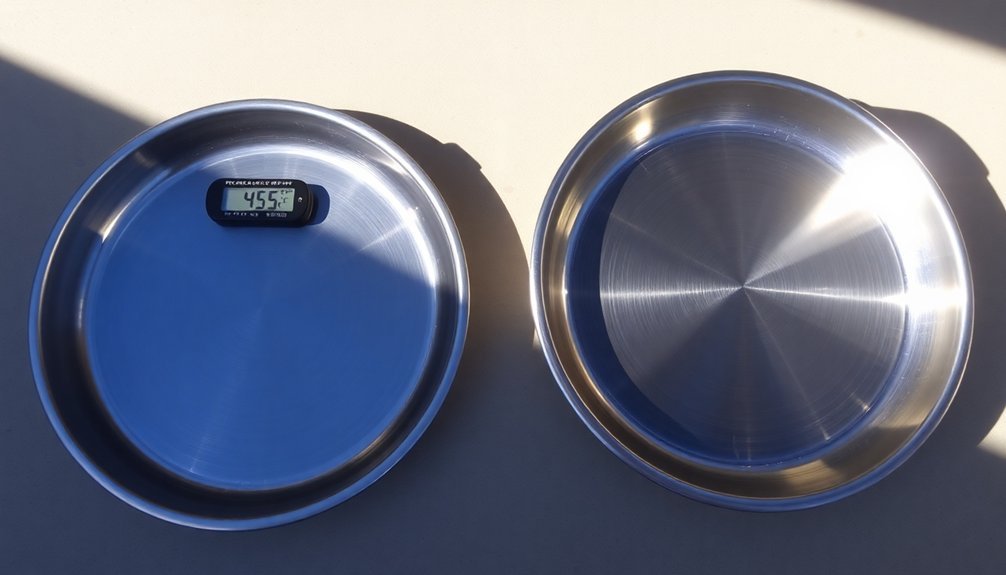
When using solar energy for baking, understanding how the sun's heat distributes across your cooking setup is essential for success.
You'll find that solar intensity varies throughout the day and depends on your location's latitude and altitude. The sun's rays are strongest when they hit your setup directly, which is why positioning matters so much.
You need to evaluate how different materials in your setup absorb and retain heat. While your dark-colored pans will absorb heat quickly, they'll also lose it rapidly without proper insulation. Rotating your setup every 10-15 minutes ensures even cooking throughout your dish.
To maintain consistent baking temperatures, you'll want to create a greenhouse effect using materials like plastic wrap to trap heat.
Remember that atmospheric conditions, including cloud cover and air transparency, will affect how much solar energy reaches your baking setup.
Choosing The Right Pan Material
Selecting the right pan material for solar baking can greatly impact your results.
You'll want to prioritize materials that efficiently conduct and distribute heat while maintaining food safety.
Aluminum-steel pans offer the best combination of properties for solar baking. They'll distribute heat evenly and won't react with acidic ingredients.
If you're on a budget, hard-anodized aluminum provides good heat conductivity while being less reactive than plain aluminum.
Avoid stainless steel pans for solar baking, as they don't conduct heat well and may create hot spots.
While carbon steel pans conduct heat effectively, they require constant maintenance and can react with acidic foods.
If you choose plain aluminum, be cautious with acidic ingredients to prevent metallic flavors in your baked goods. Using dark colored pans can help absorb and distribute heat more quickly during solar baking.
Pan Size Impact
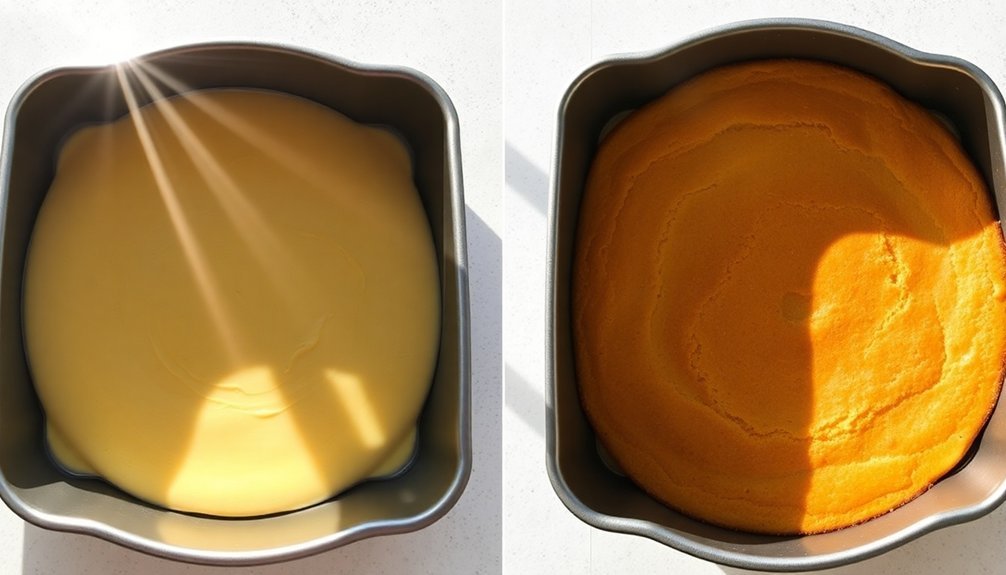
Pan size plays three critical roles in solar baking success: volume capacity, heat distribution, and cooking time.
You'll need to measure your pan's volume carefully, as using the wrong size can lead to serious baking issues. If your pan's too small, you'll risk overflow and uneven cooking; if it's too large, your baked goods won't rise properly. Your dark metal pans will need extra monitoring since they absorb more heat during sun exposure.
For sun baking, you'll want to adjust both temperature exposure and timing based on your pan's dimensions. Deeper pans require longer cooking times with indirect sunlight, while shallower pans can handle more direct exposure.
Remember that specialty pans like bundts need denser batters and extra consideration for heat distribution. To prevent disasters, always fill your pan only two-thirds full and adjust your recipe quantities according to the volume difference.
Temperature and Depth Considerations
To achieve ideal results in sun baking, you'll need to master both temperature control and depth management. Your solar oven can reach 300-350°F on sunny days, though you'll need to preheat it for about 20 minutes with the glass door closed and latched. Blue enamel cast iron dishes provide the most even heating results.
Be mindful that opening the door drops temperature by 50-75°F, so minimize checking your baked goods. You'll also need to realign your oven every 30 minutes to maintain peak heat.
For bread baking, keep dough ½" to ¾" below the pan's top to prevent overproofing, as even heating causes continued rising. Remember to reduce liquid ingredients by ¼ to ½ cup since there's minimal evaporation.
Choose dark pots over shiny ones, as they convert sunlight to heat more efficiently.
Sunlight Position for Pans
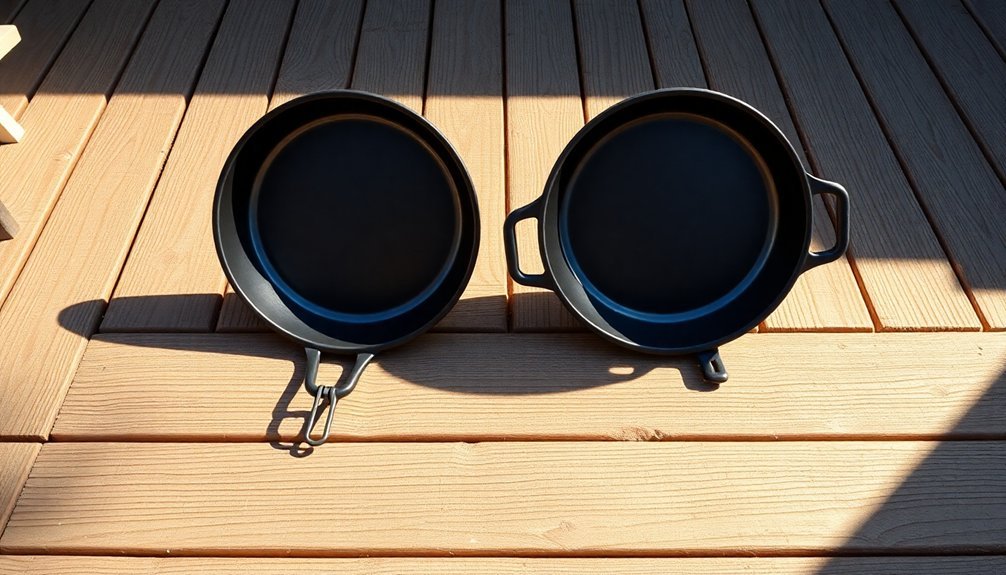
When positioning your solar oven for ideal baking results, proper alignment with direct sunlight becomes essential for maintaining consistent temperatures.
You'll need to select a spot that's free from shadows cast by trees or buildings throughout the cooking period. Place your oven facing the sun and use the E-Z Sun-track indicators on the glass door for precise alignment.
To achieve peak heating, you'll want to check the alignment every 30 minutes. Position yourself behind or to the left of the oven to guarantee the sun's dot aligns with the indicator's bottom hole.
Don't forget to adjust the rear leg's height to eliminate any shadows in the chamber. If you're leaving the oven unattended, aim it where the sun will be strongest between 10 AM and 2 PM.
Frequently Asked Questions
Can I Use Glass Pans for Sun Baking at High Altitudes?
While you can use glass pans at high altitudes, they'll require extra greasing and flouring to prevent sticking. Metal pans may work better since they heat more evenly, but glass is still acceptable.
How Do Seasonal Changes Affect Pan Selection for Sun Ovens?
You'll need smaller pans in winter due to limited sunlight hours (10AM-2PM), while summer's extended daylight (8AM-6PM) allows larger pans. Dark, non-reflective pans remain essential year-round for ideal heat absorption.
Should I Grease Sun Baking Pans Differently Than Conventional Oven Pans?
You don't need to change your greasing methods for sun ovens – use the same approach as conventional baking. Focus on choosing dark, thin-walled pans and always use lids to maintain proper temperature.
Do Colored Pan Liners Affect Baking Time in Sun Ovens?
Yes, colored pan liners notably affect your baking time. You'll find that black or dark-colored liners absorb more heat and cook faster, while light-colored ones reflect sunlight and increase your cooking time.
Can Stackable Pans Be Used Simultaneously in Sun Ovens?
Yes, you can use stackable pans simultaneously in sun ovens. You'll get the best results with specially designed interconnecting pots that fit well together and include glass lids for effective heat distribution.
In Summary
You'll need to adjust your pans carefully when sun baking to maximize heat absorption and distribution. Remember that dark, thin-walled pans work best while your pan size and depth directly affect cooking times. Position your pans to follow the sun's movement, and don't forget that shallow containers heat more evenly. By making these adjustments, you'll achieve better results in your solar cooking adventures.
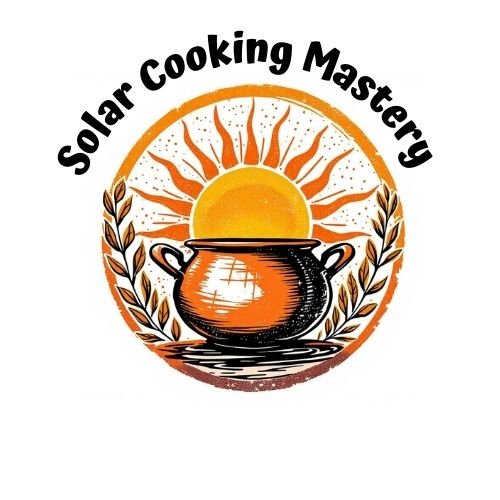

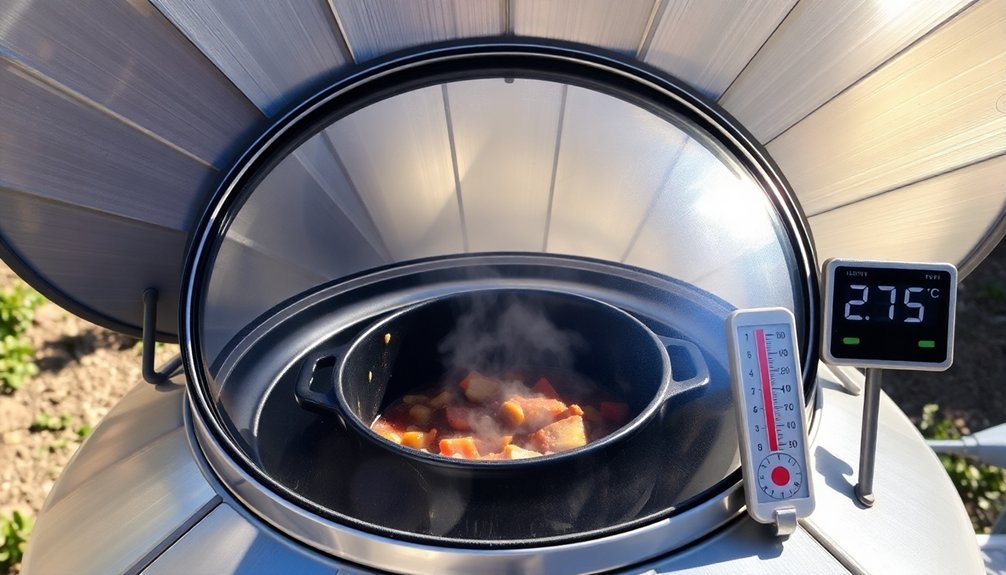
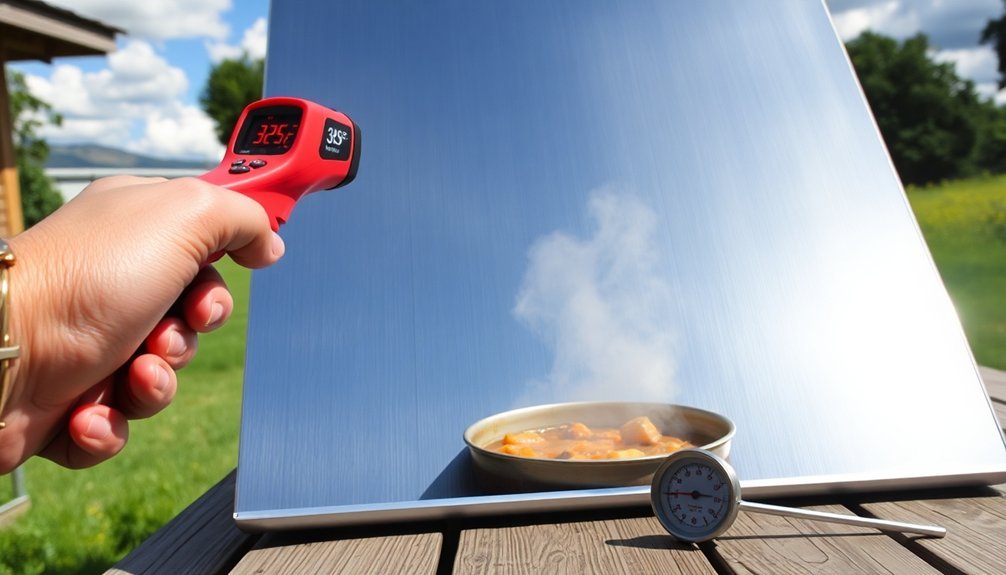
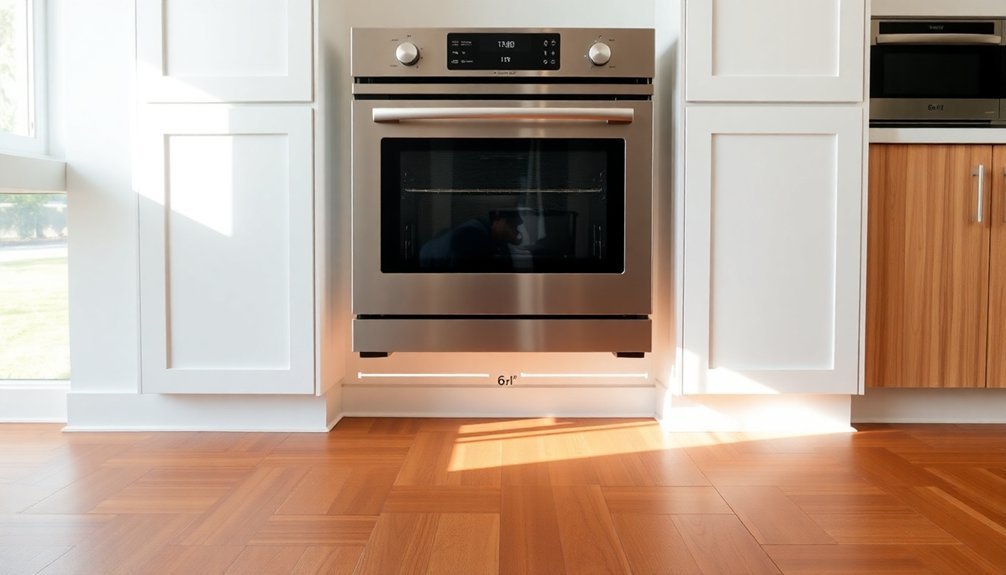
Leave a Reply